About
ADVANTAGES AND DISADVANTAGES
Advantages and disadvantages of incandescent lamps
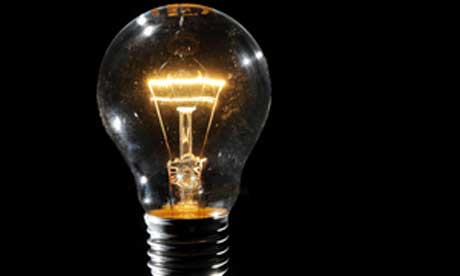
Excellent: Inexpensive to penetrate into rural areas
Disadvantages: short life; low electro-optical conversion efficiency, most of which are used to generate heat, first generate heat and then emit light, so contain infrared radiation; and easily broken; will gradually be introduced into the mainstream lighting market
Advantages and disadvantages of fluorescent lamps
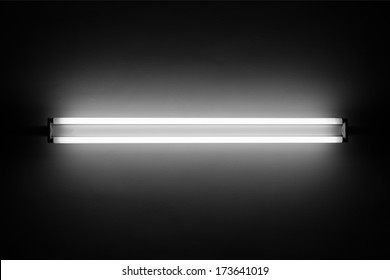
Excellent: The price is cheap and deeply popular
Disadvantages: Infrared and ultraviolet, heavy metal mercury, not environmentally friendly; stroboscopic; high voltage, activated phosphors, a little dangerous; ballasts and starters consume a lot of power; service life is limited
Advantages and disadvantages of high pressure sodium lamps
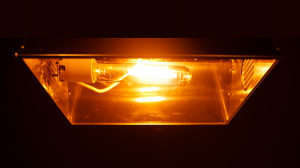
Excellent: Strong penetration, currently mainly used in stations, airports, highways
Deficiencies: Contains heavy metal mercury; high surface temperature, cannot be touched; low color rendering is only about 30; service life is about 4,000 hours, short; voltage is unstable, and it is highly destructive to sodium lamps
Advantages and disadvantages of metal halide lamps
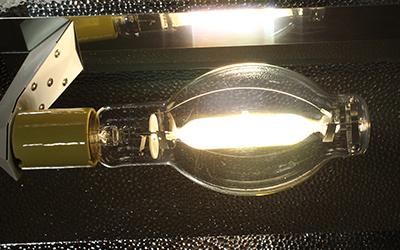
Excellent: can reach 100LM per watt, and the color rendering line is higher than 90
Defects: 1000 hours of service life, short; heavy metal mercury and rare halides; high surface temperature, can not be touched
What are the advantages and disadvantages of LED lamps compared with traditional lamps? LED
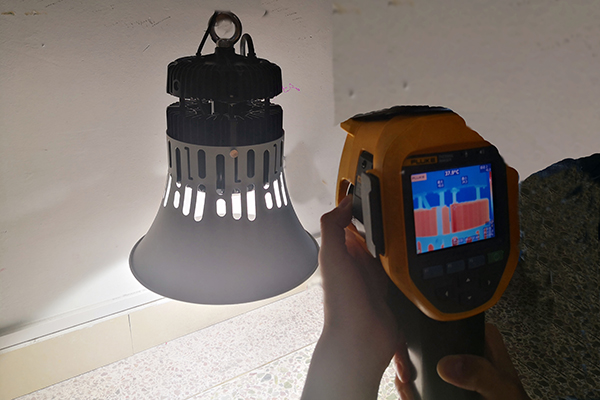
1. Long life
LED lighting fixtures can reach more than 20,000 to 50,000 hours, while the life of energy-saving lamps is 5,000 hours and the life of incandescent lamps is 1,500 hours.
2. Low power
3 watts of LED lighting is equivalent to 40 watts of incandescent power, and 6 watts is equivalent to 100 watts of incandescent power.
3. Low power consumption
LED lighting fixtures use 2 degrees of electricity, energy-saving lamps use 6 degrees of electricity, and incandescent lamps use 30 degrees of electricity.
4. High energy saving
LED lighting is 50% more energy-efficient than energy-saving lamps, 60% energy efficient than fluorescent lamps, and 98% energy efficient than incandescent lamps.
5. Easy to install
The lamp caps of LED lighting fixtures are common to energy-saving lamps and incandescent lamps and can be directly replaced.
6. Environmental protection
LED lighting products do not contain mercury, lead, and waste will not leak toxic and harmful substances, and are "green light sources".
Disadvantages of led lighting fixtures
1. Although the light decay of LED lights is low, this is basically for high-power LED lights, while the light decay of low-power LED lights is still relatively large.
2. The light color of the Led lamp is white light. Due to individual defects in the manufacturing process and the matching error of the lens, it is easy to form a yellow circle during use, which will affect the effect of the lighting.
What are the advantages of LED lamps compared to incandescent lamps?
1. Energy saving. At present, the light efficiency of LEDs is about 8 times that of incandescent lamps and 2-4 times that of fluorescent lamps, which means that the power consumption of LEDs with the same brightness is only one-eighth of incandescent lamps, and one-fourth to two times that of fluorescent lamps. one part. Use a 40W incandescent lamp, to get the same brightness, you should use a 10W fluorescent lamp or a 5W LED lamp. According to the calculation of 3 hours of use per day, the annual power consumption of incandescent lamps is 43.8 kWh, the power consumption of fluorescent lamps is 10.95 kWh, and the power consumption of LED lamps is 5.475 kWh. The above is only the calculation of a single light source. The more light sources, the more obvious energy saving.
2. Long service life. The service life of LED lamps is generally 30,000-50,000 hours, which is much higher than 1,000 hours of incandescent lamps and 10,000 hours of fluorescent lamps.
3. Green and environmental protection. It does not contain polluting elements such as lead and mercury, and does not pollute the environment, while fluorescent lamps contain mercury vapor, which can cause damage to the liver, lungs and brain even in small doses, and is extremely harmful to the human body and the environment.
4. Safety. The lamp housing is mostly made of plastic material, which has high impact strength, is not easy to break, is easy to transport, and is safer to use. Incandescent and fluorescent lamps usually use glass housings, which are relatively fragile, and are prone to glass fragments, which are not safe enough.
Comprehensive comparison of LED lamps and energy-saving lamps
Energy-saving lamps, also known as energy-saving light bulbs, electronic light bulbs, compact fluorescent lamps and integrated fluorescent lamps, refer to the lighting equipment that combines fluorescent lamps and ballasts (ballasts) into a whole. The working principle of energy-saving lamps is mainly through ballasts. The device heats the filament of the lamp tube, so that the filament starts to emit electrons, and the transition produces ionization, thereby emitting 253.7nm ultraviolet rays, which excite the phosphor to emit light. 2700K is much lower, so its lifespan has also been greatly improved, reaching more than 5000 hours.
LED, or semiconductor light-emitting diode, is a solid-state semiconductor device that can directly convert electricity into light. LED energy-saving lamps are made of high-brightness white light-emitting diode light-emitting sources, which are connected in series or in parallel by LED lamp beads. These LED lamp beads are composed of light-emitting diodes, which convert 220V AC power into voltage and current energy under the action of integrated circuit chips. The direct current that matches the LED collection can meet the requirements of the LED lamp bead collection, so that it can emit light normally.
1. The difference between Led lamps and energy-saving lamps 2: Brightness
We can compare the brightness of LED lamps and energy-saving lamps through the following data:
1W LED lamp = 3W energy saving lamp (CFL)
3W LED lamp = 8W energy saving lamp (CFL)
4W LED lamp = 11W energy saving lamp (CFL)
8W LED lamp = 15W energy saving lamp (CFL)
12W LED lamp = 20W energy saving lamp (CFL)
We can clearly see that the brightness of LED lamps is much higher than that of energy-saving lamps.
2. The difference between Led lamps and energy-saving lamps three: lifespan
The life of general LED lights can be used for more than 50,000 hours, and there are some special LED lights that can reach 100,000 hours. Of course, there are two factors that determine the life of the LED lamp, the chip, and the driver, but because the LED lamp does not have the problem of filament blown, the life of the LED lamp is much higher than that of other lamps.
The life of general energy-saving lamps is about 5,000 hours, and there are also more than 8,000 hours, that is, energy-saving lamps need to be replaced in about a year.
3. The difference between Led lamps and energy-saving lamps four: energy saving
In the case of the same brightness, the energy consumption of an LED lamp is only 1/10 of the incandescent lamp and 1/4 of the energy-saving lamp. In home lighting, a 10W LED lamp is used for 100 hours and consumes only 1 degree of power, which is far better than energy-saving lamps.
4. The difference between Led lamps and energy-saving lamps five: safety
In terms of safety, there is no doubt that LED lamps are still better than energy-saving lamps. Since energy-saving lamps contain heavy metals, heavy metal pollution will be caused when the lamp tube is broken, so there are hidden dangers in safety. However, because the LED lamp is composed of light-emitting diodes, there is no harm in this regard. Due to technical reasons, LED lamps are less likely to be damaged than energy-saving lamps, and consumers do not have to worry about damage caused by tube or bulb breakage.
5. The difference between Led lamps and energy-saving lamps five: eye protection
Energy-saving lamps are ionized by mercury vapor to generate ultraviolet rays, and then these ultraviolet rays stimulate phosphors to emit light. Because the energy-saving lamp is coated with a lot of fluorescent powder on the wall of the lamp, the fluorescent powder will emit ultraviolet rays at the same time, which will cause radiation to the eyes, and the energy-saving lamp is still a high-brightness lamp. Working in this environment for a long time is harmful to the eyes. damage is particularly pronounced.
LED lights are mainly focused on no stroboscopic. In fact, eye protection lights are high-frequency strobe lights, and their strobe frequency is as high as 482HZ. This means that the eye protection lamp makes people's eyes feel that the light has not changed to a certain extent. It uses a high-frequency electronic rectifier to adjust the current frequency to several kilohertz or even tens of thousands of hertz, that is to say, the light flashes. The speed is adjusted to thousands or even tens of thousands of times per second, so that people's eyes cannot feel the stroboscopic phenomenon.
The difference between metal halide lamps and LED lamps
The difference between metal halide lamps and LED lamps is: light source type, excess energy dissipation form, lamp housing temperature, vibration resistance, light distribution performance and resistance to grid voltage interference.
1. The difference between light source types:
Metal halide lamps are thermal light sources; LED lamps are cold light sources.
LED energy conservation, in addition to converting into visible light, excess energy will be dissipated in other ways.
2. Differences in the form of excess energy dissipation:
Metal halide lamps dissipate excess energy by means of infrared rays and ultraviolet rays, but infrared rays and ultraviolet rays will affect product quality and have an impact on human physiology;
The LED lamp generates heat through the light source device, wastes excess energy, and the heat conduction is extremely easy to control.
3. The difference between the shell temperature of lamps and lanterns:
The shell temperature of the metal halide lamp is very high, which can exceed 130 degrees;
The temperature of the housing of the LED lamp is extremely low, normally below 75 degrees. The drop in the temperature of the LED housing can greatly increase the safety and life of cables, wires, and supporting electrical appliances.
4. The difference in vibration resistance:
The filament and bulb of the metal halide lamp are easily damaged and have poor vibration resistance;
The light source of LED lights is electronic components, which are inherently anti-vibration. LED lamps have unparalleled advantages in vibration resistance.
5. The difference in light distribution performance:
The light distribution performance of metal halide lamps is difficult, the waste is large, the spot is uneven, a large reflector is required, and the lamps are large in size;
The LED light line is extremely easy to control and can achieve a variety of light distribution under the same volume, and the light spot is uniform. The convenient feature of LED light distribution can greatly save the waste of lamps in light distribution and improve the system light efficiency of lamps.
6. The difference between anti-grid voltage interference:
Metal halide lamp: poor, the power of the lamp changes with the fluctuation of the grid voltage, it is easy to overload;
LED light: stable, constant current power supply can keep the power of the light source unchanged when the grid voltage fluctuates. LED lamps can work normally during the fluctuation of grid voltage from 90-265 volts, and have no effect on the life of light sources and lamps.
Comparison of Led lamps and high-pressure sodium lamps - analysis and comparison of energy efficiency
The lighting installation power of the two should be compared on the premise of reaching the same illuminance (brightness) level and close to the lighting quality standard. Due to the high luminous efficiency of high-pressure sodium lamps (250~400W), the luminous efficiency can reach 130~1401m/W, while the luminous efficiency of low-power lamps (100~150W) is about 80~1001m/W, while the current high-power LEDs Street lights mostly use 1W LED tubes, and their light effects are similar, so it is advisable to analyze high-power street lights and low-power street lights separately.
1. High-power (≥250W) street lamps: high-pressure sodium lamps have high lighting efficiency.
Considering the three factors of ballast loss, lamp efficiency and optical channel utilization, if the comprehensive efficiency is calculated as 0.55, the effective luminous efficiency of sodium lamps is about 70~ 751m/W; while the effective light efficiency of LED street lamps is currently about 621m/W in the United States, and the best domestic enterprises have reached 56~581m/W. Therefore, for high-power street lamps, the energy efficiency of LEDs is currently lower than that of sodium lamps.
2. Low-power (≤150W) street lamps: the effective luminous efficiency of sodium lamps (including the overall efficiency of 0.55) is about 45~551m/W, and LEDs are still calculated at 56~581m/W, then LEDs can save energy by 10% compared to sodium lamps ~20%, up to 30%.
From the above analysis, it can be seen that when the low power (≤150W) used for the branch circuit, the LED street lamp can save energy by 10%~30% compared with the sodium lamp, while the high power is still not comparable to the energy efficiency of the sodium lamp. Therefore, those general claims that LED street lamps are more energy-saving than high-pressure sodium lamps, and even can save 50% or 60% of energy, are obviously exaggerated and hyped. We should adhere to the principle of scientific analysis and seeking truth from facts, otherwise it is easy to mislead users and the general public.
3. Comparison of Led Lamp and High Pressure Sodium Lamp——Analysis of Light Color of Light Source on Road Lighting Effect
The correlated color temperature (Tcp) of the high-pressure sodium lamp is about 2100K, which is a warm color temperature. Its color rendering index (Ra) is only 23~25, and the color rendering is low; while the color temperature of LED street lamps is more than 5300K, which is a cool color temperature, which is better. The products with Ra can reach 70~80, and the color rendering is good.
4. Comparison of Led Lamp and High Pressure Sodium Lamp - Economic Analysis and Comparison
High-pressure sodium lamps, each set is about 1200~1500 yuan; at present, LED street lamps, according to the size of the power, the price varies greatly, about 4000~8000 yuan. As far as the current situation is concerned, LED street lights are obviously too expensive, and the price is as high as 3 to 5 times. As before? LEDs less than 150W can save energy by 10%~30%, and each lamp can save about 50~150KWh of electricity every year, and it is impossible to recover the extra cost of purchasing lamps. It can only be expected that in the next few years, the development trend of LED will gradually reduce its price and further improve its energy efficiency, and then compare its economic performance.
5. Led lamp and high pressure sodium lamp comparison - service life analysis
The comparative service life should be based on the life of the whole lamp. High-pressure sodium lamps include light sources, electrical accessories (mainly ballasts, triggers) and lamps. The average life of sodium lamps for street lamps is 3 to 5 years, and the energy-saving magnetic ballasts will not be less than 20 years. The same is true for lamps.
WANT TO SEND INQUIRY?
Post time: Jan-28-2022




